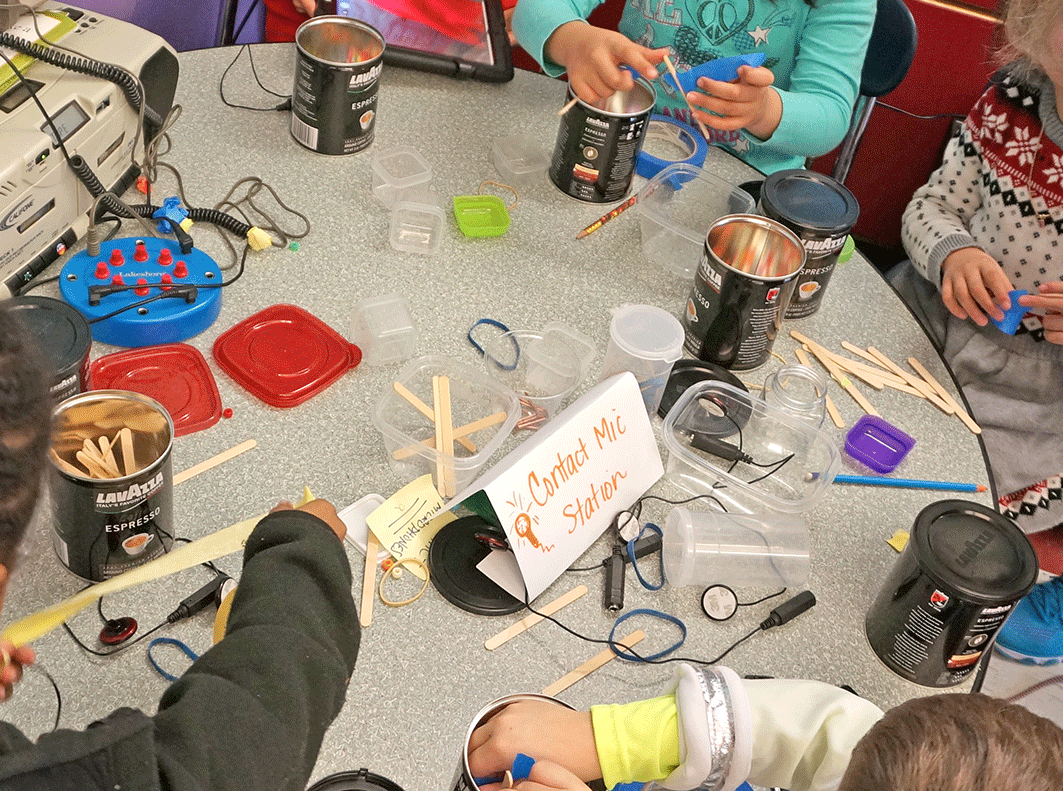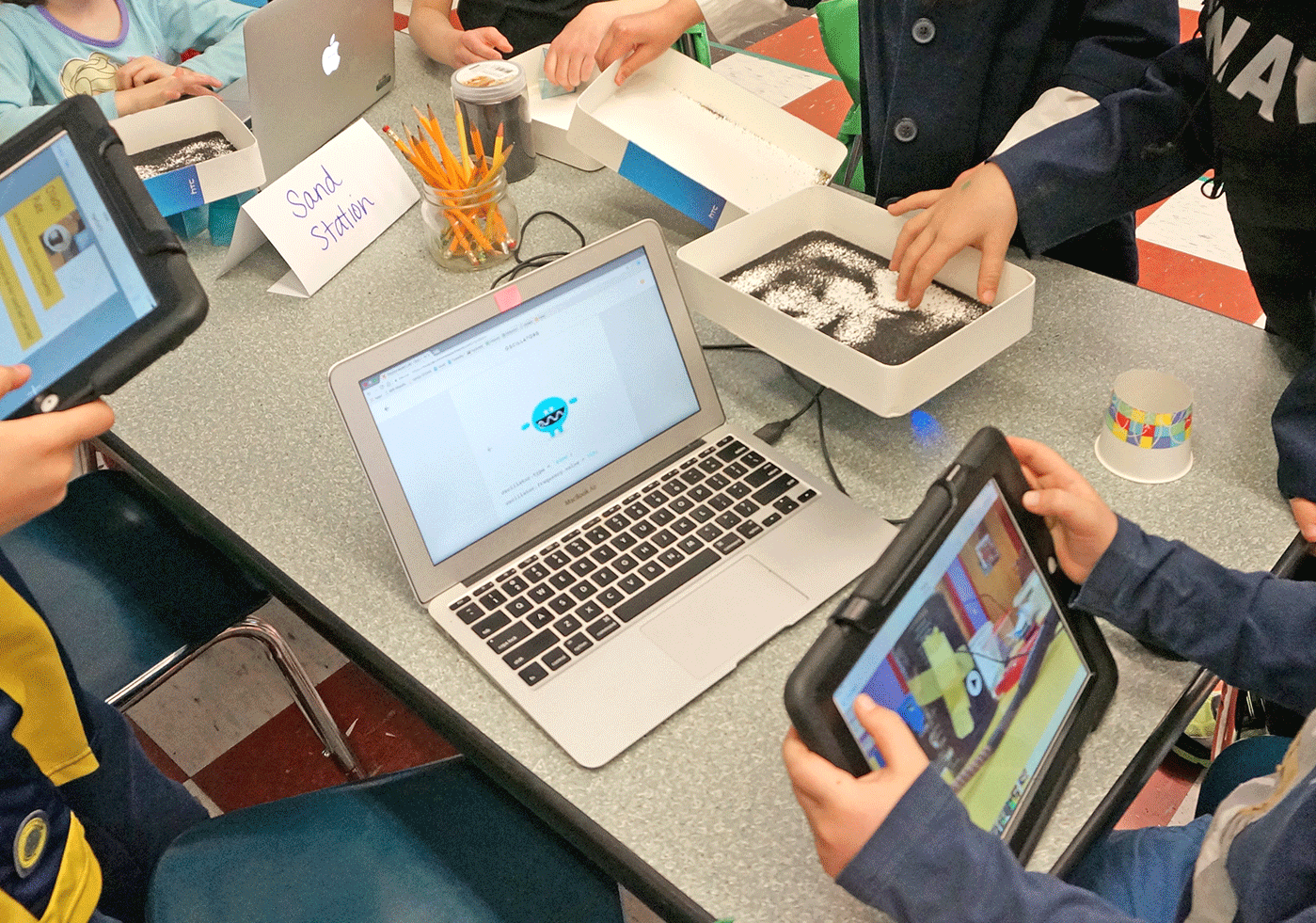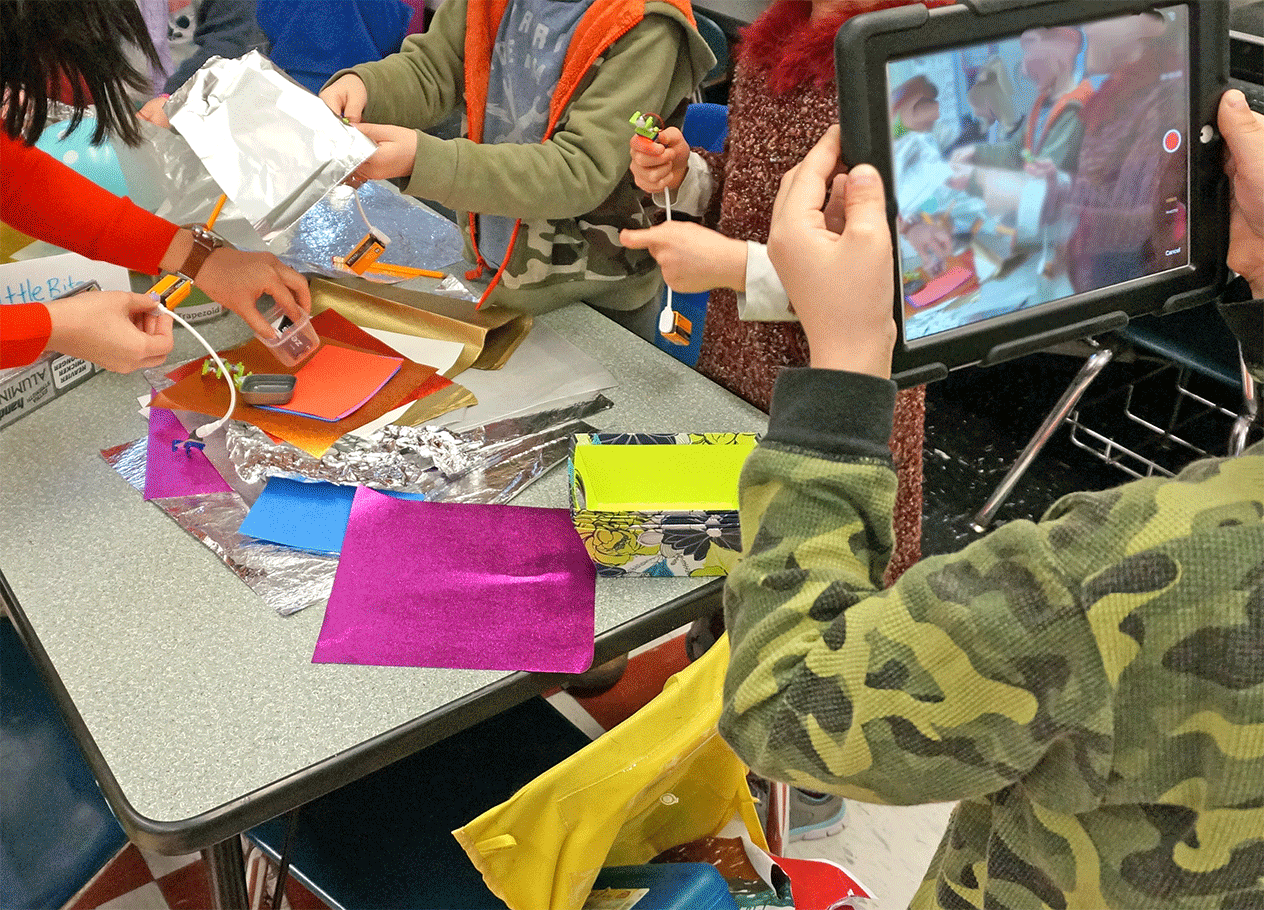
First graders at the Kennedy School were recently challenged with the following questions: What does sound feel like? What does sound look like? The Lesley STEAM team worked closely with both first grade teachers at the school to develop activities that would allow students to first and foremost explore and engage with the sounds, sights, and sensations of sound.

The teachers agreed on a center-based model that would provide the most amount of hands-on time and variation for students while allowing them to facilitate questions and assess student learning throughout the class period. Before the Lesley STEAM team came in to help launch the sound activities first grade teachers Ms. Song and Ms. Hughes led group work asking students to make inferences about sound and how sound travels. They did not explicitly embed vocabulary in the discussion, but words like vibration, waves, speakers, volume, emerged from the conversation.
Students, working in small groups of 3 or 4, rotating through the following stations:
• littleBits vibration motors: exploring how various materials (tin foil, paper, metal) react to vibration.
• DIY instruments: students used an array of recyclables, rubber bands, tape, plastic containers and coffee cans, to create their own instruments. They then secured a contact mic (vibration mic) to their instrument and connected it to a small amp to test the sounds.
• Chladni Plates: to observe and feel frequency, students piped sounds from the Chrome Music Lab app to a small bluetooth speaker. Students poured colored sand into rimmed cardboard trays and placed the trays directly on top of the speaker. Using the Oscillators app, they observed the sand as the frequencies traveled way up and way down and were amazed as the sand began to “dance” and make patterns.
• Musical instruments: the last station was sound making with true instruments: drums, xylophones, triangle, small guitars were played together to experience what sound feels like as it is combined from various types of vibration.
Each group had one iPad with which they were tasked with documenting the essential questions: What does sound feel like? What does sound look like? Using the app BookCreator, they populated their own eBooks with images and videos describing the materials and tools they used at each station and explaining their thinking throughout the exploratory process.
